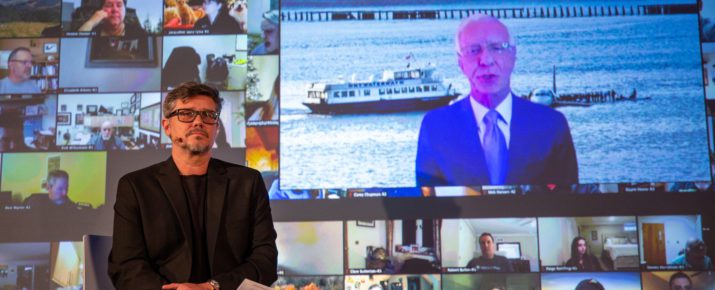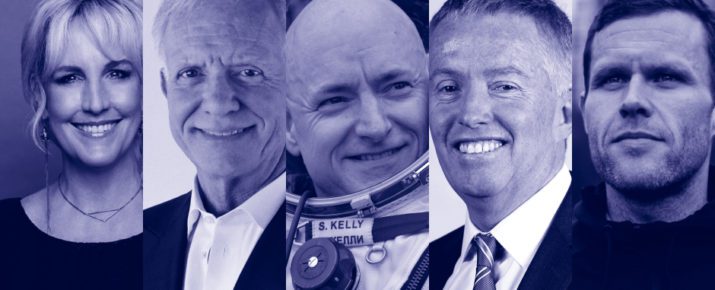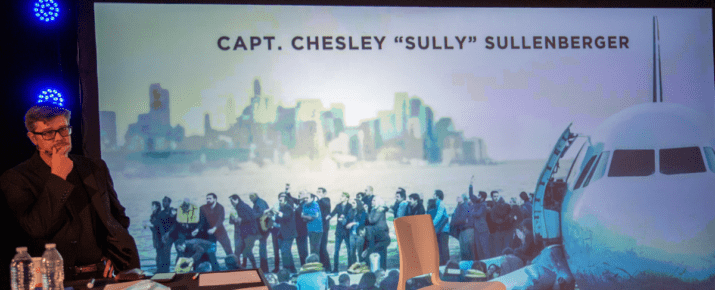Captain “Sully” Sullenberger | 208 Seconds: A Lifetime of Lessons
From Surviving To Thriving Virtual Summit | By | 10 Nov 2020 | 3 minute read
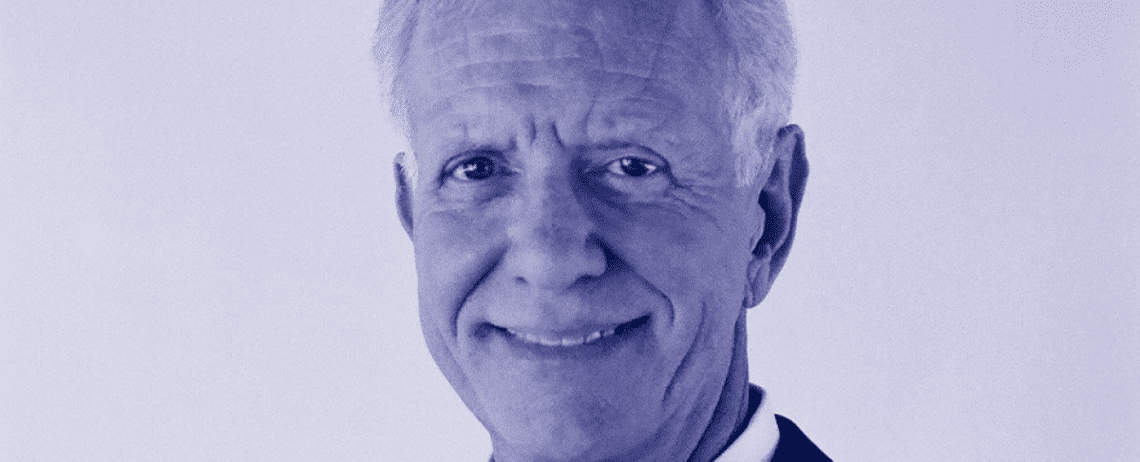
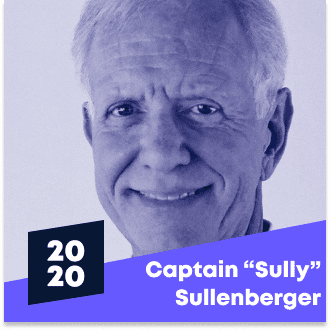
Best known as the Captain of US Airways Flight 1549, Chesley Sullenberger (better known as Captain “Sully”) has dedicated his entire adult life to the pursuit of safety.
In 2009, Sully became a hero overnight on that flight out of LaGuardia Airport. The aircraft struck a flock of geese, damaging the plane’s engines. Thinking on his feet, he turned the aircraft around and ditched it in the Hudson River, saving all 155 people aboard. He became an instant celebrity, and the incredible feat was made into a feature film with Tom Hanks.
Sully had 42 years of flying experience and already logged 20,000 hours when the incident occurred. He was an expert in aviation, but his body was still thrown into crisis mode when faced with danger. Navigating a crisis of this size requires a rapid response, a calm disposition, and a logical mindset.
His handling of the emergency situation serves as a useful reminder of how leaders can respond to global crises like the pandemic.
He shared his gripping story with us at ‘From Surviving To Thriving Virtual Summit’ event.
Captain Sully shares the wisdom that he developed while under immense pressure:
#1 Don’t be afraid to apply the safety brake, balance confidence and caution
Pilots are required to be accurate risk managers, having a full appreciation of the challenges and outcomes of each decision. They need to understand what is an acceptable risk, and what isn’t. How do they ensure safety at every turn?
By resisting the drift to expedience, says Sully. Balance confidence and caution. Pilots never leave the gate until they know they can operate at the highest level of safety. Flying a plane may not be in our daily remit, but we all have the power to apply safety brakes. Assess the situation, and allow yourself enough time to make an accurate appraisal.
In business, we have all become hyper risk-aware amid the pandemic. Not everyone is going to face an emergency event like landing an aircraft safely, but we all face challenging issues as leaders.
Remember, safety and quality share a relationship. Apply those safety brakes to your decision-making, and the flow-on effects will be readily apparent in your organization. It’s almost always better and cheaper when you choose right the first time.
#2 Communicate quality and safety standards as a team
When the engines of the plane failed, Sully had to decide how to operate with the highest level of safety. He had never landed on water before, but he wasn’t making these decisions alone. He relied on already established team roles and responsibilities, wordless collaboration with his co-pilot, and concise communication with his crew as he quickly assessed each risk in turn.
As he approached the Hudson, his co-pilot called out the plane’s altitude and speed so that Sully could make split-second adjustments and land the nose so the plane wouldn’t break apart on impact. Their communication between them was clear, coherent, and consistent as they both adhered to the same quality standards throughout the ordeal.
As leaders, we need to remove barriers and obstacles to risk and consistently push for best practice. That means continually communicating and modeling core values and high standards, and acting on our knowledge of safety. During COVID-19, the role of the compliance officer becomes obsolete – everyone becomes responsible for safety. These lines of communication run both ways – top-down and bottom-up. Accidents have given us knowledge – albeit at great cost – so we must all learn and use this information to improve the quality of our operations.
#3 Be a continuous learner, and always strive for excellence
When Sully heard the flight of geese crashing into the US Airways Airbus, his body responded in a very human physiological way to this sudden life-threatening situation. His blood pressure shot up, his pulse spiked and his perceptual field narrowed.
After considering landing on a runway but knowing the plane may not make it there, he decided to land in the Hudson – even though training for it in a flight simulator was not possible. But he knew that he had to look for the best option, even at the cost of the airplane itself:
“My favorite definition of innovation is actually a very simple one: it’s to change before you’re forced to, by competition, by regulation, or by circumstance. And the more and quicker that you’re able to change, the more it can become a competitive advantage; the better you are able to turn adversity into opportunity. I look forward to talking with you about surviving and thriving at Risk Summit 2020.”
Captain “Sully” Sullenberger
During 2020, we’ve all been forced to change at the drop of a hat. Even some businesses who have made themselves COVID-19 secure have been forced to close or change processes in the blink of an eye. Unforeseen circumstances can potentially be transformative – if we can innovate and adapt. Sully’s courageous decision saved lives and made him a national hero, in just 208 seconds.
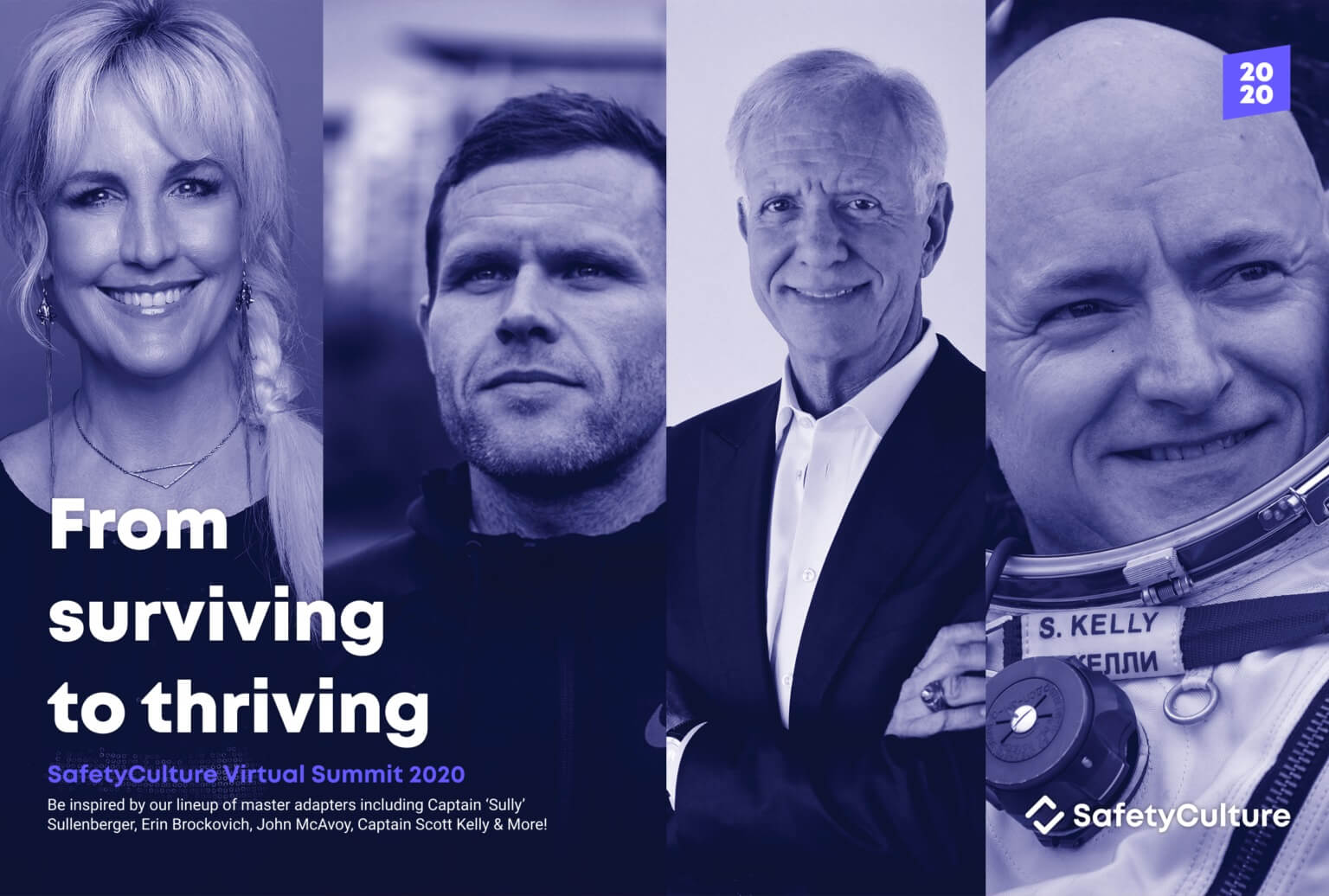
Important Notice
The information contained in this article is general in nature and you should consider whether the information is appropriate to your specific needs. Legal and other matters referred to in this article are based on our interpretation of laws existing at the time and should not be relied on in place of professional advice. We are not responsible for the content of any site owned by a third party that may be linked to this article. SafetyCulture disclaims all liability (except for any liability which by law cannot be excluded) for any error, inaccuracy, or omission from the information contained in this article, any site linked to this article, and any loss or damage suffered by any person directly or indirectly through relying on this information.
